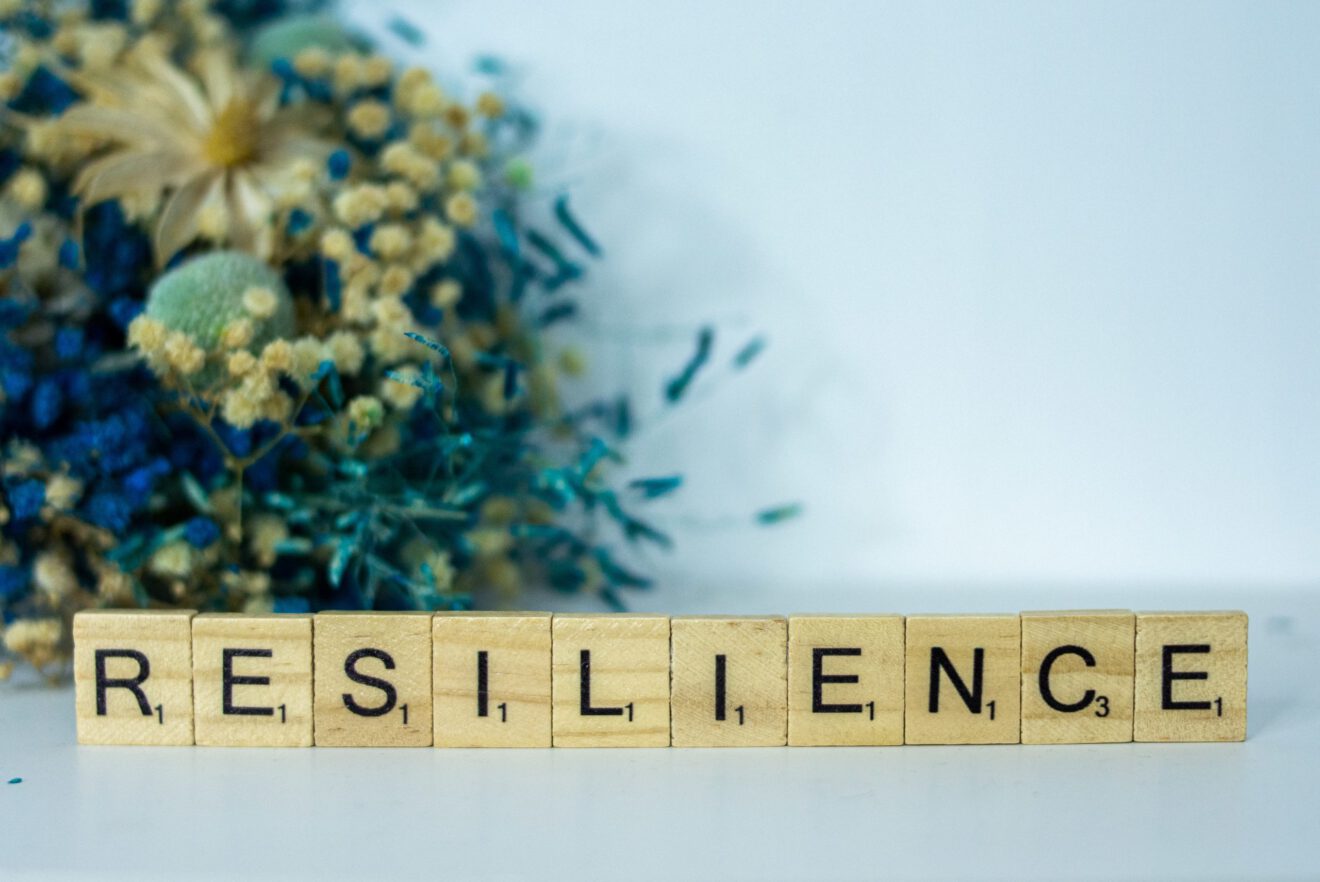This is the last article in a series of three about developing positive environments in schools. The first article covered the keys to creating a positive school learning atmosphere, and the second discussed strategies for managing challenging behavior in the classroom. Here, we talk about creating a resilient staff.
The last five years as an instructor at the Crisis Prevention Institute have introduced me to hundreds of teachers across the country. Teachers are the reason I took this job. In fact, I was a teacher myself before becoming an assistant principal and then a principal, which is how I learned about CPI’s training.

That’s also when I realized that, while I loved working with students, my passion is working with the selfless professionals who educate them. We say that about teachers a lot, but it’s always worth reiterating how much physical, mental and emotional labor goes into teaching.
I’m telling you about all this because the first two installments in this series focused on fostering a positive school climate and managing challenging student behavior, but neither is possible without a resilient staff. I’ve learned that resilience means different things, not just from school to school but from teacher to teacher, too.
While I often teach the same strategies, the conversations the training generates are never the same. I might be the instructor, but the wisdom that comes from teachers during these sessions also informs the discussions we have about how building and supporting resilience can make their demanding work significantly more manageable.
Here are four key tips for creating a resilient staff in your school.
1. Remember the importance of emotional self-regulation
Just like walking, talking and reading, the ability to calm ourselves down when we’re distressed and pick ourselves up when we’re low is a developmental skill. It’s why students often struggle with self-regulation; they’re still learning how to monitor and manage their own behavior. That’s why schools need a resilient staff.
A classroom — and by extension the whole school — benefits when we prioritize and act upon the plasticity of the adult nervous system. Yet, teachers can’t confidently help students navigate the ins and outs of emotional self-regulation if they’re unable to do so themselves.
Self-regulation hinges on our ability to use our rational brain to keep our emotional brain in check while balancing decision-making in the classroom between the two. A good place to start is to organize your thoughts in writing before the start of the school day. Include the goals you hope to accomplish, along with backup options if the original plan goes awry.
While being mindful of backup options might seem to be an unnecessary use of our time, it’s extremely important. We know that taking a deep breath or asking someone to cover our classrooms for five minutes can be logical solutions, but we can forget about logical solutions if we haven’t thought about them in a while. Making a daily effort to acknowledge our plan for emotional moments can be very valuable and empowering.
Understanding your own emotional triggers is just as important as understanding those of your students. Take stock of the situations that kick your emotions into overdrive and have strategies in place to calm them before they overtake your rational brain. This is where the integrated experience comes into play. Remember that your students’ behaviors and emotions affect you the same way your behavior and emotions affect them. Be prepared to de-escalate your emotional brain before you can de-escalate theirs.
When you find your rational brain losing ground to your emotional brain, pause and turn to what it does best: the logical stuff. I recommend doing a simple math problem in your head to get your rational brain back on track. Or, you can learn about our crisis development model or verbal escalation continuum and visualize those to push thoughts back into the rational parts of your brain.
Ultimately, instead of reacting to an emotional behavior with heavy emotions, consider the behavior, what it can be defined as and what the cause of that behavior might be. While you’re busy thinking, you won’t be overreacting, and that’s the goal!
Lastly, these two sides of the brain are intertwined, so if the emotional brain is carrying too much weight, the rational brain will eventually feel it too. Finding outlets for your stress and emotions, like talking to your colleagues or turning to a favorite pastime, is essential to lightening that load.
2. Lean on educational assistants and colleagues for support
Managing emotional self-regulation in yourself and your students while also developing new activities, keeping students engaged and mitigating challenging behaviors is a heavy undertaking. A second creative mind and an extra set of hands, eyes and ears provided by an educational assistant or a colleague make supporting a proactive behavior management approach infinitely more realistic. This is another reason a resilient staff rather than a few resilient teachers is crucial.
If we’re always flying solo, it’s easy to stay within our comfort zones when presented with new situations, opportunities and challenges in the classroom. Educational assistants and colleagues can offer a fresh perspective and new ideas that free us from our unconscious habits, which builds resilience and flexibility.
The presence of another person also means you don’t have to bear the physical and mental weight of the classroom on your own. Having someone else take on part of the lifting gives teachers more time to connect with students in meaningful ways while also creating opportunities to model positive interactions with another adult.
3. Incorporate positive behavior management mantras
While creating a positive climate should be a school’s North Star, that doesn’t mean we should expect staff to radiate positivity day in and day out. It’s not fair or realistic. But how can you stick to your positive behavior management strategies all the time, especially on days that don’t feel quite right? Turn them into mantras like these:
- “When a student gets anxious, I’ll be as supportive as possible.”
- “I’ll remember to use every behavioral hiccup as a learning opportunity for students and staff.”
- “Should a child’s behavior escalate, I won’t panic. I have a plan in place, and I’ll follow it.”
- “If a student gets disruptive, I’ll take a deep breath before reacting or responding.”
- “The only behavior I can control is my own.”
Positive self-talk and a supportive attitude allow you to maintain professionalism and perspective when handling challenging situations, so commit yourself to your mantras at the start of each school day to make them a priority. I also like the idea of hanging them up in the teacher’s lounge or keeping them somewhere on your desk for when you need a pep talk most.
Furthermore, you might even tell students about your mantras. Let them know that you’re human and need reminders to stay rational when emotional moments happen. Sometimes, bringing students in on your mantras and philosophies creates empathy that may even encourage them to be understanding and supportive when they see emotions beginning to affect you.
4. Recognize that a resilient staff needs support from leadership
Educators can’t, and shouldn’t have to, build resilience in themselves and each other without proper support. Each year, more than 200,000 teachers leave their jobs — and two out of three educators report leaving for reasons other than retirement. Most cite inadequate preparation, challenging working conditions and lack of support as some of the greatest motivators to take their talents elsewhere, all of which have been exacerbated by both the pandemic and recent political tensions. Even when teachers stay, that doesn’t mean they’re not burned out.
While there’s no one-size-fits-all solution to tackling these issues, there are steps leaders can take to foster a more confident team, increase staff retention and avoid staff burnout.
- Provide mentoring and induction for new teachers. When teachers feel welcome and supported, they’re more likely to stay.
- Invest in professional growth opportunities. It gives teachers more confidence in their abilities and attracts more candidates.
- Budget for educational assistants who can take on some of the physical and mental load of running a classroom.
- Create accountability partner programs where staff can lean on one another to avoid burnout and push each other to succeed.
- Provide individualized growth paths that send the message that you want your teachers there for the long term.
Lastly, consider professional training that delves into emotions and behaviors. I call it training for humans because it’s the foundation of every interaction we have, and we can always stand to understand ourselves and each other a little bit better — inside and outside the classroom.
Kevin Mabie, Ed.D., is a global professional instructor at the Crisis Prevention Institute with over two decades of experience as a teacher and principal. His work with CPI and the National School Reform Faculty has allowed him to work with hundreds of educators and act on his mission to positively affect those working in schools today.
Opinions expressed by SmartBrief contributors are their own.
_________________________
Subscribe to SmartBrief’s FREE email ASCD newsletter to see the latest hot topics in education. It’s among SmartBrief’s more than 250 industry-focused newsletters.
